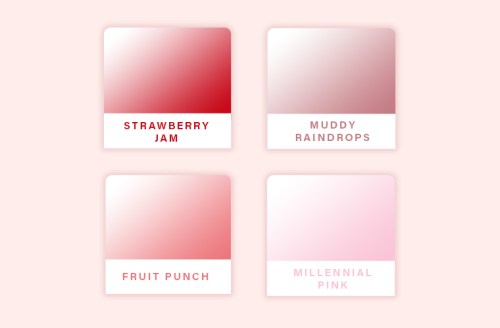What Your Period Blood Color Says About Your Health
Learn how your period blood color can provide insights into your health and wellness. Discover abnormal period blood hues and why they occur.

Can we all agree that there’s no such thing as a “normal period”? No two flows are identical. Your sister’s period blood color may be a dark brown while yours is a light pink. Even the way your own menstrual blood looks can change from month to month, and at different times during your cycle. “In the beginning, menstrual blood color tends to be bright red, and as it comes to an end, can appear brown or black,” says OB/GYN Sherry Ross, MD.
Experts in This Article
board-certified gynecologist
nurse practitioner and vice president of clinical client strategy at WINFertility
board-certified OB/GYN and author of She-ology: The Definitive Guide to Women’s Intimate Health. Period
The truth is, there’s a veritable Pantone of period blood colors. And certain hues can tell you a lot about your body and your overall health. “The color of period blood depends on the length of time the blood stays in the uterus,” explains gynecologist and pH-D Feminine Health advisor Erica Montes, MD. “The longer it sits, the darker it gets because of a process called oxidation.”
Although most hues are nothing to worry about, there are a few tints that could be warning signs that something might be off in your system medically. Should any of them appear down there, track the occurrence just like you track your period—and make an appointment with your doc ASAP.
Period blood colors to keep an eye out for
There are many things you simply don’t need to worry about when it comes to your period. Yes, you can safely swim in the ocean during your period. Yes, it’s totally normal to need to pee more during a period. No, sex will not start your period sooner. No, nausea during your period doesn’t necessarily mean you have serious health problems.
And yes, there are many period blood variations. But while most are totally normal, some can be associated with menstrual health signals that you might want to alert your health-care provider about.
If it looks like fruit punch
Bright red period blood and health go hand in hand. But what if the hue has the watered-down look of a party drink whose ice cubes have melted? “[It] could represent a vaginal discharge, which could come from a sexually transmitted infection (STI), cervical cancer, or a normal pregnancy,” says Dr. Ross.
If it’s millennial pink
This color might be cute, but it doesn’t belong your menstrual blood, according to Dr. Ross. “Light bleeding can be a sign of low estrogen levels caused by the birth control pill, anemia, significant weight loss, or a poor diet,” she says. In fact, breakthrough bleeding on the pill is a common side effect when you first start out, causing light pink blood.
Another possibility? “If your period stays fairly pink throughout your bleeding for the month, that could be an indicator of low iron levels, as iron gives the blood its red color,” says nurse practitioner Rachel Jones, APRN, FNP, vice president of clinical client strategy at WINFertility. Low iron levels can also cause extreme fatigue before your period, weakness, and other PMS-related symptoms. Eating a varied diet of chicken, red meat, beans, and dark leafy greens can help keep your iron levels normal.
If it’s the consistency of strawberry jam
Period blood clots or a jelly-like clump can look and feel alarming, but it’s not necessarily something to worry about. “Essentially there are globs of coagulated blood and tissue from the lining of your uterus,” says Jones. Chunks the size of raisins or smaller during a heavy blood flow are totally normal, Dr. Ross adds. But if they’re thick and larger than a quarter, they can be indicative of a hormonal imbalance, uterine fibroids, uterine polyps, or an abnormal pregnancy.
If it looks like muddy rain drops
In most cases, spotting mid-cycle is NBD—often, it’s just a sign of ovulation. But if you’re seeing brown droplets between periods for more than two to three months, it could be because of hormonal fluctuations caused by puberty, pre-menopause, menopause, polycystic ovarian syndrome, or birth control side effects. Consulting a doc can help you figure out the source.
What does your period color say about your fertility?
Your period blood color isn’t going to give you much info about your chances of conceiving. “Your menstrual cycle length is more likely to tell you something about your fertility. If you have short menstrual cycles (less than 24 days) or longer cycles (more than 35 days) then that could be an indicator of problems with ovulation,” says Jones. But other times, things like being sick can delay your period (i.e., a nasty flu or cold), or even being under chronic stress.
You can use an app or a journal to track the days of your cycle and mark down any noticeable changes. Some people sync their period on a full moon calendar, which may have some spiritual significance.
What is the healthiest period blood color?
There are many health indicators in period blood. “Pink to red to dark brown can all be normal, depending on your flow,” says Dr. Montes. “I don’t necessarily think one is healthier than another as long as your cycle length is between 21 and 35 days, and your flow is not more than one pad per hour [or] with persistent blood clots.”
She adds that your menstrual blood color may be darker if you are using a hormonal birth control because there is less uterine lining to shed and it also sits longer in the uterus, making it darker.
Two colors of period blood that can be concerning? “If you have blood mixed with yellow or green discharge, that could be a sign of an infection, and that should be evaluated,” says Dr. Montes.
Bottom line: Most likely, changes in your period blood color are nothing to worry about. But if you think something’s off, get it checked by your doc.
Sign Up for Our Daily Newsletter
Get all the latest in wellness, trends, food, fitness, beauty, and more delivered right to your inbox.
Got it, you've been added to our email list.














